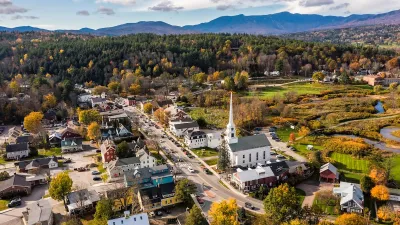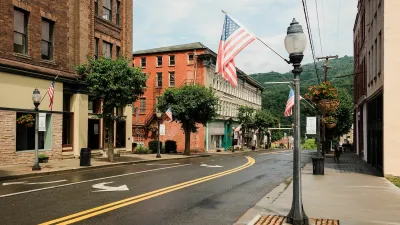Aaron Renn responds to a column in the Kansas City Star lamenting the political inequities of Kansas City's urban setting relative to nearby rural communities.
Jason Hancock wrote the original column for the Kansas City Star. The refrain will be familiar: "Rural areas hold political clout well beyond their numbers, winning regularly on the issues and in the division of tax dollars."
Renn himself acknowledges that he's written on the subject before, but he seems particularly lively here: "Who could argue against making things better? It seems absurd. So why is it so hard to make progress?"
Renn identifies a number of reasons for the divide, and also suggests a few paths for a wider prosperity—one that benefits more of the places that have so far been not benefitted by the rising tides of globalization. "What’s needed is a new bargain in our states and regions. Larger metros and thriving regions will be given the authority, tools and financing they need to improve themselves and meet the demands of today’s globalized, talent-based economy. In return, they will be expected not just to send back tax “remittances” to the rest of their state, but also to deploy some of their intellectual and policy resources toward the problems facing the left behind areas."
FULL STORY: The Urban vs. Rural Wars Within States

Study: Maui’s Plan to Convert Vacation Rentals to Long-Term Housing Could Cause Nearly $1 Billion Economic Loss
The plan would reduce visitor accommodation by 25,% resulting in 1,900 jobs lost.

North Texas Transit Leaders Tout Benefits of TOD for Growing Region
At a summit focused on transit-oriented development, policymakers discussed how North Texas’ expanded light rail system can serve as a tool for economic growth.

Why Should We Subsidize Public Transportation?
Many public transit agencies face financial stress due to rising costs, declining fare revenue, and declining subsidies. Transit advocates must provide a strong business case for increasing public transit funding.

How to Make US Trains Faster
Changes to boarding platforms and a switch to electric trains could improve U.S. passenger rail service without the added cost of high-speed rail.

Columbia’s Revitalized ‘Loop’ Is a Hub for Local Entrepreneurs
A focus on small businesses is helping a commercial corridor in Columbia, Missouri thrive.

Invasive Insect Threatens Minnesota’s Ash Forests
The Emerald Ash Borer is a rapidly spreading invasive pest threatening Minnesota’s ash trees, and homeowners are encouraged to plant diverse replacement species, avoid moving ash firewood, and monitor for signs of infestation.
Urban Design for Planners 1: Software Tools
This six-course series explores essential urban design concepts using open source software and equips planners with the tools they need to participate fully in the urban design process.
Planning for Universal Design
Learn the tools for implementing Universal Design in planning regulations.
Ascent Environmental
Borough of Carlisle
Institute for Housing and Urban Development Studies (IHS)
City of Grandview
Harvard GSD Executive Education
Toledo-Lucas County Plan Commissions
Salt Lake City
NYU Wagner Graduate School of Public Service





























